Chapter 9 Chapter 6 Who is older, the emperor or the pope?
The history of Europe begins with a great empire and its fall.Europe learned so much from the Roman Empire that its formation was deeply influenced by the collapse of that empire.The name Edward Gibbon gave to his historical tome, The Decline and Fall of the Roman Empire, is etched in our minds.
Think about it, after a time like that, what it would be like to know that there was once such a great civilization in the past, and now it has been wiped out.However, if you ask a medieval aristocrat or scholar what it's like to live today after the Roman Empire is no longer, they must be at a loss.Because in their view, the Roman Empire still exists.In fact, until the 19th century, something called the Roman Empire survived in this world.How could it be that the blood of the last emperor of Rome goes all the way back to Augustus?
Augustus began to rule the world in 27 BC, and the empire he established lasted for five hundred years in the West.Around 400 AD, the empire was permanently split into east and west halves, while the Eastern Roman Empire continued to survive for another thousand years, until it finally died out in 1453.The barbarians who invaded the Western Roman Empire recognized the right to rule the Eastern Roman Empire.The first Christian king of the Frankish Kingdom, Clovis I (Clovis), obtained the title of "Consul" from the Eastern Roman Emperor; and the Pope, who did not die with Rome, also recognized the status of Eastern Roman Emperor. Despite several barbarian invasions and the fall of the Western Roman Empire, key parts of the old order remained intact, according to the highest religious leader.In Rome there was a pope, and in Constantinople lived a Christian emperor.The two centers of power, the pope and the emperor, will soon rule this Christian land together.However, when the pope desperately needed the help of the Eastern Roman emperor, the emperor was too weak to lend a helping hand.
The threat to the Pope came from the Lombards, a second wave of Germanic peoples who invaded in the eighth century.They were determined to win, and intended to occupy Italy completely, including Rome and its surrounding areas.For the pope, this is a great threat.
Even today, the Pope maintains his personal territory: Vatican City.Although the city is not big, it is his own territory after all, not part of Italy.Successive popes have feared that if they were not the supreme head of the territory, their independent status would be wiped out.Think about it, if the Vatican was only a part of Italy, Italy might pass a decree saying that all classes must have equal job opportunities, including church organizations.In doing so, the Vatican could come under investigation for never appointing a woman as a bishop, let alone a woman pope.The Italian government may tax the wealth of the Holy See.Maybe Italy will pass legislation requiring the Vatican to place condoms in all public toilets.
For the same reason, the Pope in the eighth century was unwilling to submit to the rule of the Lombards.He appealed to the emperor of the Eastern Roman Empire for help, but the emperor was too busy dealing with the invading Muslims, so the pope turned his attention to the Franks north of the Alps.The Germanic nation established many countries in the west, and Frank was the most powerful one.King Pepin, who believed in Christianity, went south to Italy and pacified the Lombards.He may have made a big promise to leave a large area of land around Rome to the Pope, so that the Pope will have full ownership.Although the boundaries have been changed many times, the Pope's territory has survived until the 19th century, when Italy became a unified country, and the Pope's kingdom was reduced to the square inch it has today.
Charles I, or Charlemagne, was the son of Pepin III.He greatly expanded the territory of the Frankish Kingdom.His territory crossed the Pyrenees, as far as Italy, and reached central Italy, including the lands allocated to the Pope by his father; east to Austria, deep into the territory of modern Germany.Since the fall of the Roman Empire, no European country has ever had such a vast territory except for the short-lived proclaimed emperors of Hitler and Napoleon.In Germany, Charlemagne confronted some local pagan Saxons from the east who had not entered the Roman Empire.The Saxons did not believe in Christianity, and Emperor Charlemagne gave them two choices: either convert to Christianity, or be sent back to his empire as slaves.
In AD 800, Charlemagne came to Rome to attend Christmas Mass in the cathedral.After the ceremony, seemingly without warning, the pope placed the diadem on his head and declared him emperor of the Roman Empire.He put himself on the throne in order to establish a power center that could protect him, but this move was tantamount to betraying the emperor of the Eastern Roman Empire, and he had to find a reason to explain it.That's not easy!In Constantinople, the eastern capital, the current emperor is a woman. This woman blinded her son, removed the big stones on the road, and put herself on the throne.By papal decree she was no longer the emperor of the West.
What happened in the cathedral on Christmas Day in AD 800 sparked a big debate between the emperor and the pope.The pope emphasized that since the pope put the crown on the head of Charlemagne, it means that the pope has higher power than the emperor.However, when the Pope had crowned Charlemagne, he bowed to Charles, and the emperor, therefore, was justified, saying that the pope's move was tantamount to admitting that the emperor's power was above the pope.The emperor's faction even pointed out that Charlemagne had already become a strongman on his own, and his power did not rely on the Pope's blessing.
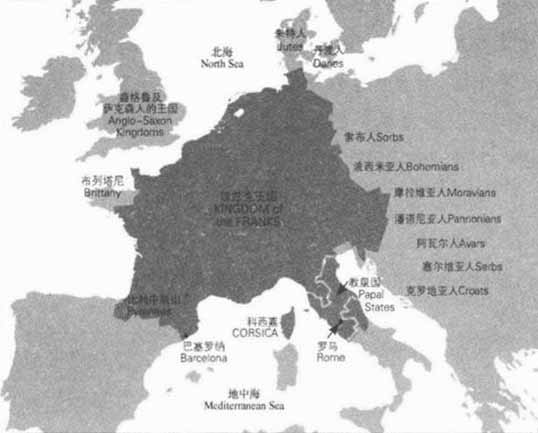
Figure 6-1 The Frankish Kingdom continued to expand. In addition to today's France, parts of Germany, Spain, and Italy were also within its territory.
The empire that Charlemagne built was very different from the Roman Empire; as a ruler, his style of governing the country was also very different from that of the Roman emperor.Basically, he was a barbarian king.He had educated himself to read, and he could read Latin, but he always had trouble writing.Until his later years, there was always a wax tablet beside his bed for practicing writing, but he still couldn't get the essence of writing.But he knew that the Empire was a civilizing force, a concept he had learned from Rome.His Germanic ancestors lived by plunder, and in order to plunder even more, they penetrated deep into the Roman Empire.
You can form a government like this: establish a system of plunder and plunder, let the powerful increase their wealth, and let their relatives and friends rise to heaven. There are many such governments in ancient and modern times, all over the world.Saint Augustine, whose time was at the end of the Roman Empire, wrote in his book "City of God": "If there is no justice, there is nothing left in the kingdom but usurpation. ?” Charlemagne, familiar with the book, knew this; St. Augustine was one of his favorite authors.With the pagan Saxons he could be cruel and insolent until they came to Christ, but once they became Christians under his rule he made it his business to have them ruled justly.
Although the effect of self-education was not obvious, Charlemagne advocated education and gave full support to learned people; he ordered scholars to search for ancient classics and copy them.Almost all Latin works surviving today are copies from the reign of Charlemagne.Without him, the chances of these classic legacies remaining are slim to none.
Charlemagne faced formidable obstacles.There is no bureaucracy under him, there are no channels of communication, business is sluggish, the towns are extremely small, and there is chaos everywhere.All situations are very different from the Roman Empire.His governing model is to send dukes and earls to sit in the territory, on the one hand, to prevent local lords from making mistakes, and on the other hand, to make them obey Charlemagne.The empire had no constitutional basis, and the government was governed solely by the power of the leader.
Charlemagne built his palace at Aachen, near the center of his domain.Aachen is located in the west of today's Germany, near the border of Germany and Belgium, and today only the cathedral remains.The cathedral was built in the Roman style, that is, a Roman-style building with a rounded roof.The large pillars supporting the dome of the church are real Roman relics, specially brought back from Italy by Charlemagne.
After all the hard work to build a huge empire, Charlemagne decided to follow the Germanic custom and distribute the land to several sons after his death. Unfortunately, only one of his sons survived, and the division of the empire was not realized until the generation of his grandchildren.And these grandsons fought each other, and Charlemagne's empire was divided into three; the western part finally became today's France, and the eastern part became the original land of today's Germany.However, several grandsons competed for each other and the Vikings invaded. In the chaos, Charlemagne's strategy of governing the country has disappeared.Earls and dukes from all over the world established themselves one after another and became strongmen who dominated one side. No matter who became the king, it was "I have nothing to do with imperial power", and their obedience was minimal.Europe returned to the situation at the beginning of the fall of Rome: the power was greatly dispersed, and the king had to subdue the separate counts and dukes on the hills before the powerful kingdom could be restored to the world.
The empire built by Charlemagne disappeared, and the pope lost his strongman to protect him.For a period of time the Pope just muddled through, and he crowned the king wherever the princes supported him.In 962 AD, a powerful new king, Otto I (Otto The First), finally appeared in the territory of Germany separated from the old empire of Charles.The Pope put on the crown of the Roman Empire for him. From then on, no matter who became the king of Germany, he also served as the supreme head of the Roman Empire after being crowned by the Pope, that is, the later Holy Roman Emperor.
In Europe, only German kings were elected.Long before the invasion of the Roman Empire, the tradition of the Germanic peoples was a mixture of inheritance and election.Candidates for the throne are all male heirs of a certain royal family. This is to ensure that the selected king has the blood of a good warrior.
In France, it happened for a long time that all kings produced capable sons, and gradually hereditary became the only way to determine who could become king of France.However, the king of Germany is not so good at giving birth to good sons, so the electoral system not only remains intact, but also because the German king also serves as the emperor of the Holy Roman Empire, the role of election is even more important.Since the emperor ruled a large area of Christianity, coupled with the electoral system, theoretically, any candidate who believes in Christianity has a chance to be elected, but in fact, almost all the candidates are selected by the crown prince of a certain German family.At the beginning, local powerful people such as bishops and lords had the right to vote, and there were a large number of them; in the end, only seven people were left with the status of "electors".
Like kings all over the world, the German king-emperor struggled with overpowering local strongmen—some of whom were his electors.Since the emperor had to curry favor with the electors in order to ascend to the throne, sometimes he not only dared not show his imperial prestige, but backed down by three points instead.In addition to local power struggles, the emperor has been involved in another struggle for hundreds of years, and the opponent is a figure who is equal in power and status: the Pope, which makes the situation more complicated.
The growing power of popes and emperors was driven by each other.The emperor has always been the defender of the papacy, especially in protecting the pope's possessions.They occasionally meddled in the affairs of the papacy, to ensure that the pope was a man of faith, lest some speculator should sit on the throne of St. Paul (who was the first pope).The Pope increased the authority of the emperor by crowning the emperor and bestowing the title of Roman Emperor, but since the 11th century, the pair began to turn against each other, because the Pope insisted that the affairs of the church should be governed by Rome, and neither the king nor the princes and nobles could intervene .
The Catholic Church was the largest international organization in the Middle Ages, but its power was always weakened, because both kings and local power brokers wanted to influence the bishops in their fields.They worked hard not just to have a voice in church affairs; bishops were given many positions—priests (commonly known as priests), administrators of the church, and at the same time controlled large tracts of land, which was the source of income for the church.Sometimes, one-third of the country is in the hands of the church, and in the German area it is almost half.Those with secular power are therefore eyeing, eager to influence bishops who are capable of exercising great religious power.
When we say that the church is an international organization, we might as well imagine it this way: Toyota Motor, which is engaged in the automobile manufacturing industry, has its headquarter established in Tokyo, Japan. Assuming that the CEO of the Toyota Australia branch must be appointed by the Australian Prime Minister, the factory manager is appointed by the local mayor .Institutionally, the factory director and executive director must follow the instructions of the Tokyo head office, but in fact, since they are appointed by the prime minister and mayor of Australia, of course they will look forward and backward, and be careful not to offend them.What's more, the candidates appointed by Australia's prime minister and mayor don't necessarily understand cars very well. They just give this errand to whoever they want to please.Such was the case with the medieval church, infested by termites, exploited by local power brokers and European monarchs, and always languishing in power.
It was Gregory VII, who became Pope in 1073, who stood up against all these seemingly warm arrangements so that the authority of the Holy See could be restored to stability.He publicly declared that thereafter bishops would be appointed by him personally.Henry IV's response was: In the future, this position will continue to be arranged by "I".The emperor took a hard line, and the pope excommunicated him—in other words, the emperor was thrown out of the church's gates and could no longer attend mass or receive any services from the church.This has always been a powerful magic weapon in the hands of the pope, because expelling the emperor is like telling the people of the whole country that they no longer have to obey the emperor's orders.The nobles and princes had long wanted to escape from the emperor's control, and now they found that he had been expelled from the church wall, and they could ignore him from then on, and they were all happy.
Henry IV braved the harsh winter weather across the Alps and came to the castle of Canossa in northern Italy to see the Pope.He waited for two or three days in the snowstorm outside the castle, just begging the pope to see him.He took off all the symbols of royal power on his body and only dressed in civilian clothes. The Pope finally relented. The emperor knelt down in front of him and asked for forgiveness. The princes and nobles were naturally blowing their eyes with anger.It was, of course, humiliating for Henry IV to do so, but it was also wise, since it is difficult for a Christian pope to refuse to forgive.Of course, the emperor did not completely abandon his position.The feud continued for years, before finally reaching a compromise: the emperor could wield some influence over the bishops, but it had to be the pope himself who actually bestowed the bishops with the scepter and robes.
The dispute between the emperor and the pope lasted for a long time, and they even met each other with swords and fought on the battlefield.How, you might ask, is the Pope going to fight?Since he is also the king of a country, he has his own territory to collect taxes, and he uses the taxes to hire soldiers.He looked for allies everywhere, and sometimes he would cooperate with some princes who did not want to submit to the emperor. For example, it was like opening the back door of the emperor's house to make trouble.During the Middle Ages, the towns and cities of northern Italy became the most affluent regions in Europe, and the emperor's country has reached as far as the south.These towns don't like being constrained by the emperor, and sometimes they will take the initiative to form an alliance with the Pope and join forces to fight the emperor.They often act as fools on the fence, submitting to whichever side is beneficial to them.
For this warrior-like pope, the Renaissance artist Cellini has a wonderful description in his autobiography.Like many figures of the Renaissance, Cellini was a multi-talented figure, not only a skilled goldsmith, but also proficient in weapon making.Once when the enemy attacked Rome, he was on the pope's side and gave instructions on how to fire the cannon.One of the Pope's enemies was some old Spanish official who had fought for the Pope but was now in the enemy's camp. This man stood at a distance, completely unaware that he would be within range, relaxed, with his sword still hanging on his shoulders. chest.When Cellini gave the order to fire, the cannonball immediately struck the military attache's sword, which plunged backwards into the military attache's body, cutting him in half.Cellini was so upset that he killed a man who was completely unprepared for death.He knelt before the pope and asked for pardon, but the pope said joyfully, "Oh, I forgive you, I forgive you for all the murders you have committed in serving the church."
This is the statue of St. Paul (see the picture below), the first pope recognized in the world, dressed in a medieval robe, a gorgeous cloak and a huge crown. He never forgot his poor background in fishing. Feet are barefoot.In the Middle Ages, most people would not feel glaring about such luxury. The pope was an important prince. He should have all the clothes of the royal family, because he was the head of the church and he had to meet other monarchs as an equal.
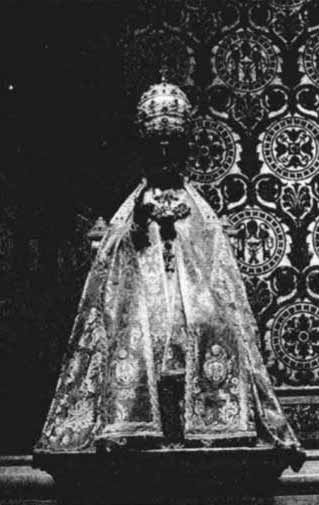
Figure 6-2 St. Paul's Cathedral in Rome, St. Paul wearing a crown.Medieval bronze statue.
The struggle between the pope and the emperor was always a stalemate, and neither side was ever completely victorious.They're like a fight between the boss and the guys; there's strikes, there's fire threats, sometimes it's hot and bloody, but you know it's going to work out in the end, and there will always be bosses and employees in the world.If there is any significance in the dispute between the pope and the emperor, it is that the pope has never said that he is the emperor, and the emperor has never regarded himself as the pope.Both sides recognize that the existence of the other is necessary, and what they are fighting for is only the relative power of each other.This is a very important feature of the Western Roman Empire, and it is also where it differs from the Eastern Roman Empire.
In the east, according to the rules of Constantinople, the emperor was not only the ruler of the secular affairs of the entire empire, but also the ruler of the church.They also have a supreme bishop, but this supreme bishop is appointed by the emperor and is also under the jurisdiction of the emperor.In the west, the church and the state are two separate power units, each with its own authority.This was an inexorable obstacle to the king, preventing him from claiming that the world was his alone.
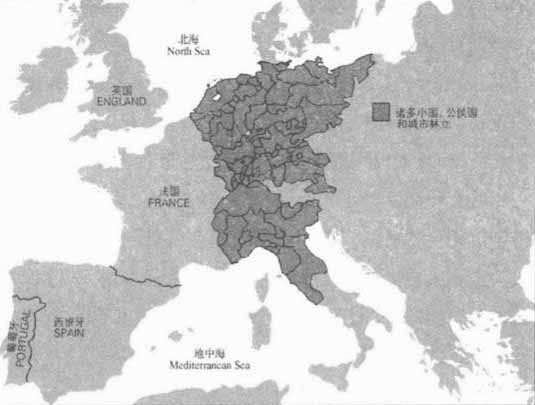
Figure 6-3 Western and Central Europe in AD 1648.
As a result of the long-term struggle, the power of both the pope and the emperor was weakened (Figure 6-3).Take Central Europe from Germany in the north to Italy in the south. The long-term consequences can be seen on the map; this region is like a patchwork of many small countries, principalities and cities.In the west, England, France, and Spain have risen as a unified country, local dukes and earls have been subdued, and kings must do what they order within their borders.The reason why the United Kingdom has such a situation is due to Duke William (Duke William). In 1066, he used force to pacify the size of the country and established a monarchy that was stronger than the European mainland.
On the other hand, in Central Europe, the pope and the emperor have always been fighting. In order to fight each other, the two power centers would rather hand over their domestic authority as a transaction. As a result, local power has not decreased but increased. their kings look upon them.In modern times (after 1400 A.D.), the two major radical movements in Europe, the Renaissance and the Reformation, took place here.It is difficult to say why these two major movements occurred, but it is easier to answer why they occurred here.
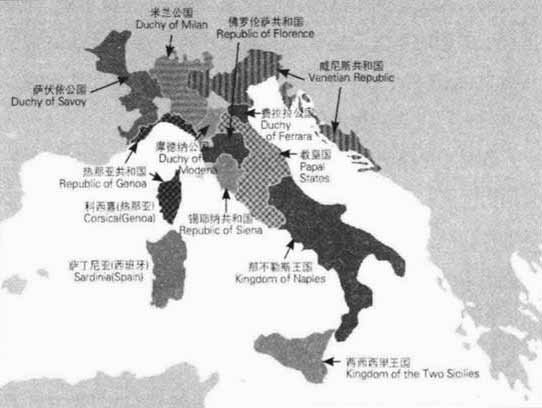
Figure 6-4 Italian states during the Renaissance (around 1494 AD).
The cities in northern Italy, the birthplace of the Renaissance, are quite similar to the small city-states in the ancient Greek era.These Italian towns are militarily and culturally hostile, they conquer each other and compete with each other, and they compete with each other artistically.Because they were both cities and states, they could gather many talented people in one place; and their nobles, unlike other European countries, lived in cities and did not regard their territories as their proper homes.The diversity and dynamism of urban life characterize this whole society, where it is possible to conceive and practice a project for the reconstruction of the ancient world.
The reason why Martin Luther's religious reform took root and spread here is because of the decentralization of secular power.It was the emperor's duty to suppress Martin Luther's heresy, but he delayed doing so, ordering that Martin Luther come to meet him by safe passage, which was searched even by nobles and princes.
But Martin Luther refused to take back what he said or wrote, and the emperor declared him a heretic, forbidding anyone to support him, and issued a warrant for his arrest.But the emperor's order was immediately kicked to iron; Frederick I, Elector of Saxony, took Martin Luther away and hid him.It was while hiding in his castle that Martin Luther began translating the Bible into German.Frederick and other princes supported Martin Luther out of self-interest: they hoped that they could control the church and the land of the church. They sacrificed the Pope and the emperor to expand their power, and Lutheranism was born.
Germany and Italy were divided until the second half of the 19th century, and the two countries were not united until much later, and were more inclined to the strong nationalism of the Romantic period than those who united earlier .These two countries adopted the most aggressive and exclusive nationalism of the 20th century, known to the world as "fascism".
Although the seat of Holy Roman Emperor itself has little real power, the empire has survived.Since the late Middle Ages, a family has been creating candidates to become Holy Roman Emperors.This family is the Hapsburg family (Hapsburg), one of the most prominent and ruling royal families in European history.Members of the House of Habsburg were kings of Spain, Austria, several Italian regions, and the Low Countries (Netherlands, Belgium, Luxembourg).For them, the title of emperor is just icing on the cake; their power comes from their own kingdom.Voltaire, the master of the Enlightenment, laughed at the Holy Roman Empire, saying that it was neither Holy nor Roman nor an Empire, and it was true, but with a name and a very strange system it could Survival always seems to be a bit of a miracle.Until the head of a new empire appeared, this strange and lingering old empire came to an end.The man was Napoleon Bonaparte, who became ruler of France in 1799, ten years after the French Revolution.
The French Revolution started from the slogan of liberty, equality, and fraternity. For the next four years, the ruling power fell into the hands of the Jacobin dictator who ruled the country with a guillotine; the crisis of war has passed, and Robespierre will continue to do so He continued to be in power, but he was finally overthrown and sent to the guillotine.The moderate believers in the republic tried to stabilize the revolutionary situation, and also tried to drive out the supporters of the democratic forces and the restoration of the king-these people were not in the minority or even increasing day by day.In order to fight against these two resistance forces and to continue the life of the republic, the government had to use force, and as a result, its prestige was lost.This gave Napoleon the opportunity to rise.He had previously made a name for himself by leading French revolutionary campaigns against the invasion of other monarchical countries in Europe that did not see the French republic.
Napoleon's father was a figure of the Enlightenment, a believer in the principles revealed by the revolution, but he did not believe that the people had the right to rule themselves.Since 1789, France has been losing ground in this endeavor, and Napoleon's political views are therefore very attractive.He was the most charismatic of all dictators. He did not grant privileges to any group, all citizens were treated equally, the state provided all children with educational opportunities, and all positions were openly elected.He recruited talents from all sides into the government, whether they were royalists or republicans, supporters or opponents of the Jacobin terror regime, completely disregarding their past roles in the revolution.He gave them only one mission: to create a rational and orderly system of government.
There are several reasons why I haven't written much about the "dictatorship" of the French monarchy.One is that although they established their own power, they still ruled a patchwork rather than a unified country.The legal system and administrative system are like a horse-drawn carriage, and in order to stabilize the new French territory and cultivate new subjects who are loyal to him, the monarch released a lot of compromises, privileges, and immunities.The Revolutionary Party brushed all this aside, thinking about the establishment of a unified country.However, amidst the scrambled chaos, little progress was made in establishing a new regime.Napoleon entrusted this task to himself and his group of experts. Their greatest achievement was the formulation of the Napoleonic Code, modeled after the code compiled during the reign of Justinian the Great, a set of laws and regulations that could be followed in all matters.
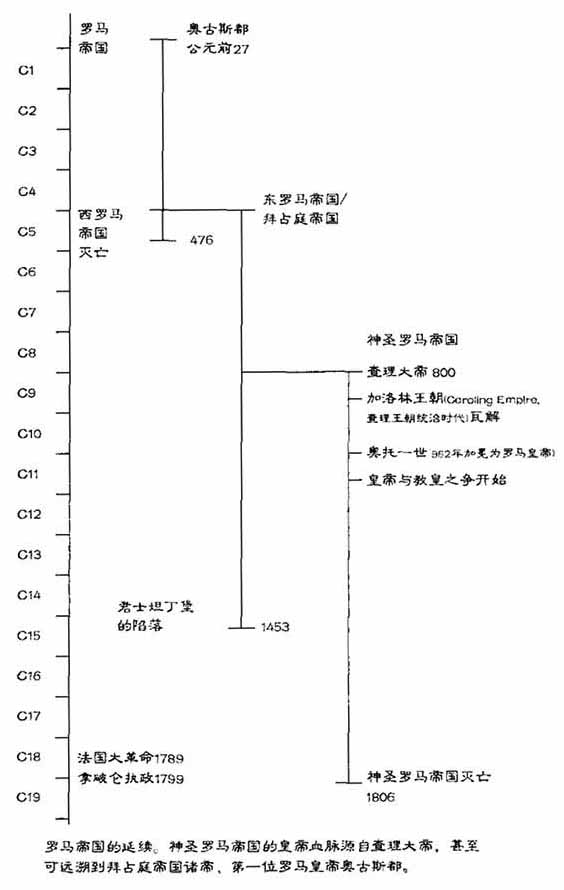 Rome was an important role model for Napoleon.He called himself consul at first, then emperor, though, like Augustus, he had no intention of using this title to abolish the French republic.Like the Romans, he intended to build a vast empire, making the founding principles of the French Republic the basis of a fair, just and well-ordered society.Although it was the early revolutionaries who started the war, he continued to fight the European powers and won many brilliant victories.He expanded the borders of France and redistributed the fiefdoms outside France, placing his brother in charge.
Rome was an important role model for Napoleon.He called himself consul at first, then emperor, though, like Augustus, he had no intention of using this title to abolish the French republic.Like the Romans, he intended to build a vast empire, making the founding principles of the French Republic the basis of a fair, just and well-ordered society.Although it was the early revolutionaries who started the war, he continued to fight the European powers and won many brilliant victories.He expanded the borders of France and redistributed the fiefdoms outside France, placing his brother in charge.
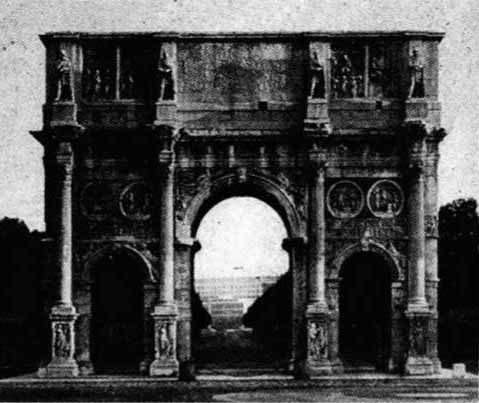
Figure 6-5 The Arch of Constantine in Rome: Built to commemorate Constantine I's victory over the enemy emperor in 312 AD.
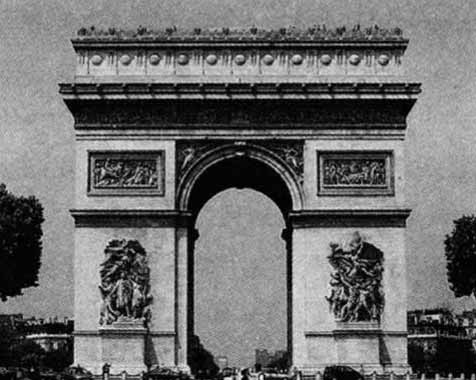
Figure 6-6 Arc de Triomphe in Paris: In 1806, Napoleon ordered its construction in its heyday.
He uprooted the old forces, privileges and many sick phenomena of the Middle Ages for the European continent, and established a new rational order.After a long period of recuperation, several powerful countries in Europe finally teamed up to defeat Napoleon, but his achievements cannot be erased.He was later exiled to the island of Saint Helena in the South Atlantic, and when he looks back on his life, he is most gratified that the Napoleonic Code survived and circulated throughout Europe-it still exists today.The Holy Roman Empire did not survive. In 1806, Napoleon abolished the empire and reorganized it as the Confederation of the Rhine.
Napoleon was not a believer, in other words, he did not believe in God.He believed in chance and destiny.But he understood the deep connection between people and faith, and how important religion is to maintaining morale and order.The early revolutionaries were children of the Enlightenment and lacked such respect for governing religion.To say that the main reason for the division of French society and the people's growing respect for the revolution is nothing like attacking the Catholic Church.Napoleon was determined to put an end to the hatred and schism that the revolutionaries had taken over ecclesiastical lands and established a state church of rival sects that the Pope refused to recognize.
He reached an agreement with the Pope (the agreement between the Holy See and the government has a special name called Concordat), recognizing Catholicism as the religion of most people in France but not "all" people; Followers of and other religions have the right to practice their beliefs without interference.As for the appointment of bishops, the agreement brings it back to the old rule: bishops are nominated by the state but clothed by the pope.
In the presence of the Pope, Napoleon was crowned Emperor at Notre-Dame Cathedral.The pope appointed Napoleon and Josephine as emperor and empress, and blessed the symbols of royal power: orb, scepter, sword, and the hand of justice.It was Napoleon, however, who wore the diadem for himself, a replica of the diadem that the Pope had worn for Charlemagne, hollow and light like the laurel wreaths that the Romans wore for victors.

Figure 6-1 The Frankish Kingdom continued to expand. In addition to today's France, parts of Germany, Spain, and Italy were also within its territory.

Figure 6-2 St. Paul's Cathedral in Rome, St. Paul wearing a crown.Medieval bronze statue.

Figure 6-3 Western and Central Europe in AD 1648.

Figure 6-4 Italian states during the Renaissance (around 1494 AD).


Figure 6-5 The Arch of Constantine in Rome: Built to commemorate Constantine I's victory over the enemy emperor in 312 AD.

Figure 6-6 Arc de Triomphe in Paris: In 1806, Napoleon ordered its construction in its heyday.
